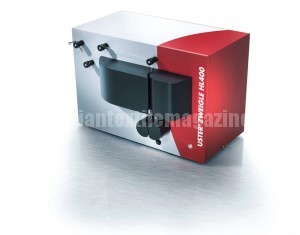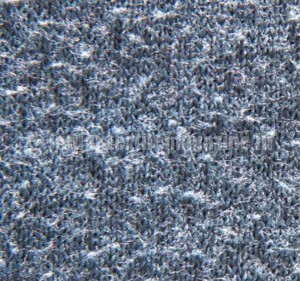Turkish trials, a pointer to big gains for Indian mills

A six-month comparison by a leading Turkish spinner shows the benefits of measuring and controlling hairiness levels with the Uster ZWEIGLE HL400. The findings are significant for yarn producers aiming to achieve production excellence. Especially with compact-spun yarns, the Turkish company reports productivity gains, and there are no more customer complaints about excessive hairiness.
Indian spinners are increasingly targeting quality-oriented brands and markets, as Turkey already does, by successfully expanding their exports to Western Europe, notably Italy, Portugal, Germany and France. “To become an established supplier in quality-oriented markets brings new challenges to our customers,” says Mr. Rathnam V.R., President and Head of Uster’s subsidiary in India. Customer feedback to him concerns quality claims for foreign matter contamination (e.g., by white transparent polypropylene), as well as for barré, white specks in dark-dyed fabric and hairiness issues.
Mr. Rathnam is committed to supporting customers to make the most of market opportunities by optimizing their quality and productivity, in the same way that the Head of Uster’s Turkish organization supports spinners in that country.
Almer Tekstil business success
Almer Tekstil, a leading spinner in Turkey has recently achieved significant results in tackling a difficult quality issue by applying the latest technology from Uster to take control of hairiness in its compact-spun yarns. The company benefited by preventing customer complaints, as well as enhancing productivity in both spinning and winding, thanks to investment in the Uster ZWEIGLE HL400 hairiness length measurement instrument.
Almer Tekstil is a relatively young company, with its spinning plant at Kayseri, Central Anatolia, established in 2002 to produce yarns for weaving and knitting. In 2005, it added compact spinning to its portfolio. With 24,000 spindles of conventional ring spinning and 28,320 for compact yarns, the plant is now a major producer of yarns in the count range Ne 20-100, including carded, combed, compact and elastane core options. Production capacity is 23-25 tons per day, some 50 per cent of which is compact-spun. Around 50 per cent of the total output is exported.

Hairiness impact on fabric appearence
As an Uster customer, Almer Tekstil has strong awareness of the importance of consistent quality in a competitive environment as well as the potential risks of any shortfall. That is why the company reacted immediately to complaints about hairiness levels in some of its compact yarns. Rejected fabric samples analysed showed problems on fabric surfaces, in both raw and finished material. Further investigations revealed that some other yarn producers had introduced routine tests on hairiness levels in yarn. Afterwards Almer Tekstil acknowledged that hairiness was a key quality parameter for compact yarn.
Tülay Fidan, Almer’s head of quality control, explains how the company set about dealing with these quality concerns and addressing customer complaints: “My manager and I were able to convince the owner to invest in the Uster ZWEIGLE HL400 hairiness length measurement instrument. We know that yarn hairiness impacts on many aspects of fabric quality for various textile end-uses, and the crucial benefit is that spinners can forecast how a yarn will look and perform downstream, based on the measured data from the Uster ZWEIGLE HL400. This has enabled us to eliminate the hairiness problems, as well as increasing efficiency in productivity.”
S3, key for compact yarn
Uster ZWEIGLE HL400’s sensitive measuring system focuses on protruding fibers in the yarn. This factor is especially important for mills spinning compact yarns, who need detailed data on the length of protruding fibers. The global benchmark quality parameter for compact yarns is known as the ‘S3’ value, referring to the number of fibers protruding by 3 mm and more.
The Uster ZWEIGLE HL400 hairiness tester takes the S3 hairiness value to a new level, with a number of technical advances. It now operates at 400m/min, which is eight times faster than the previous speed of 50m/min. It also offers improved accuracy and a unique self-calibration feature which prevents user error. The system can test any type of spun-staple yarn, displaying the number of protruding fibers in seven different length categories, for ease of analysis. Furthermore, the Uster ZWEIGLE HL400 integrates fully with the OH Hairiness Sensor option of the Uster TESTER 5, to cover every hairiness testing requirement.

Improvement in figures
After equipping its laboratory with the Uster ZWEIGLE HL400, Almer Tekstil initiated a rigorous six-month program to measure and compare the impact. Starting with the 28,320 compact spindles, hairiness checks were carried out, spindle by spindle, choosing 20 spindles from each machine daily. Based on data from these tests, Almer was able to define acceptable hairiness limits for its yarns and establish its own standards as S3 values.
After a fixed review period of six months, the company examined data from ‘before and after’ the new hairiness testing regime. The results were conclusive: Productivity (winder efficiency) improved by up to four per cent and yarn breaks in spinning were reduced by five per cent. No further customer complaints after implementing continuous S3 measurement and hairiness tests were reported.
Almer Tekstil Chairman Ali Basyazicioglu, Member of the Board Sükrü Tamer Basyazicioglu and Factory Manager Fatin Rüstü Turnali readily appreciate the benefits of the company’s investment. Says Mr. Turnali: “After equipping our laboratory with Uster ZWEIGLE HL400, hairiness is under control in our production, and we also welcome the fact that controlling hairiness has had a positive impact on productivity.”